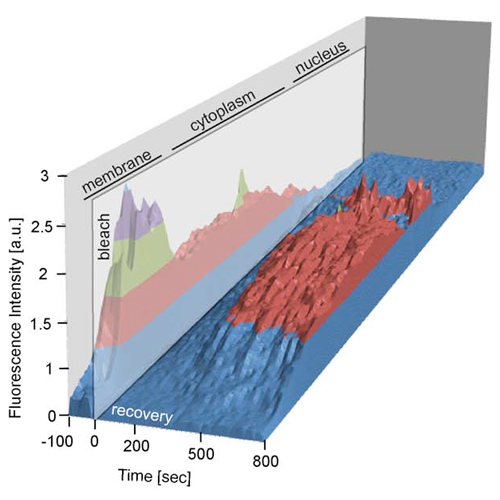Direct and Dynamic Detection of HIV-1 in Living Cell
28-Nov-2012
PLOS ONE, 2012, doi:10.1371/journal.pone.0050026, Volume 7, Issue 11, e50026 published on 28.11.2012
PLOS ONE, online article
PLOS ONE, online article
In basic and applied HIV research, reliable detection of viral components is crucial to monitor progression of infection. While it is routine to detect structural viral proteins in vitro for diagnostic purposes, it previously remained impossible to directly and dynamically visualize HIV in living cells without genetic modification of the virus. Here, we describe a novel fluorescent biosensor to dynamically trace HIV-1 morphogenesis in living cells. We generated a camelid single domain antibody that specifically binds the HIV-1 capsid protein (CA) at subnanomolar affinity and fused it to fluorescent proteins. The resulting fluorescent chromobody specifically recognizes the CA-harbouring HIV-1 Gag precursor protein in living cells and is applicable in various advanced light microscopy systems. Confocal live cell microscopy and super-resolution microscopy allowed detection and dynamic tracing of individual virion assemblies at the plasma membrane. The analysis of subcellular binding kinetics showed cytoplasmic antigen recognition and incorporation into virion assembly sites. Finally, we demonstrate the use of this new reporter in automated image analysis, providing a robust tool for cell-based HIV research.











